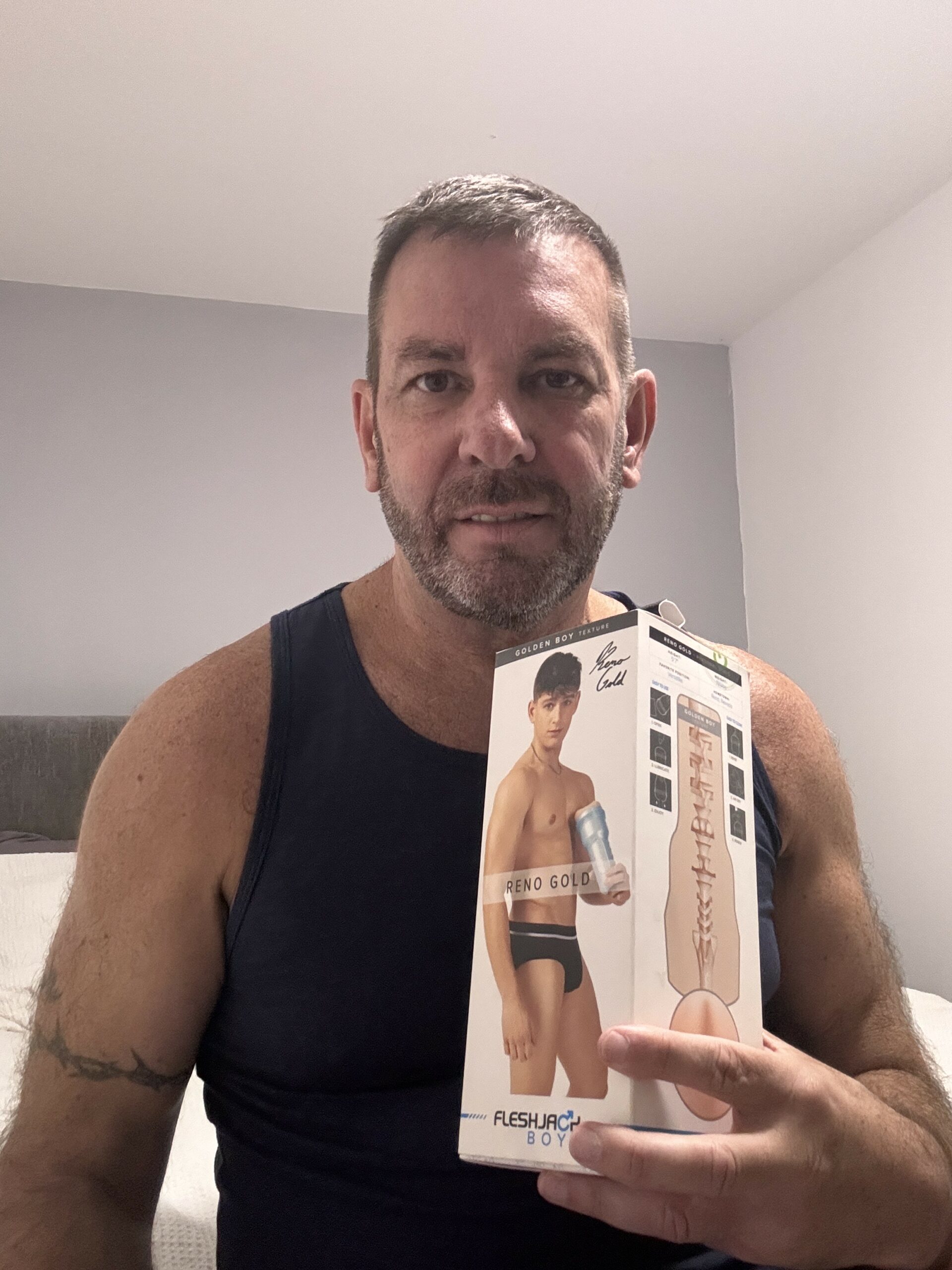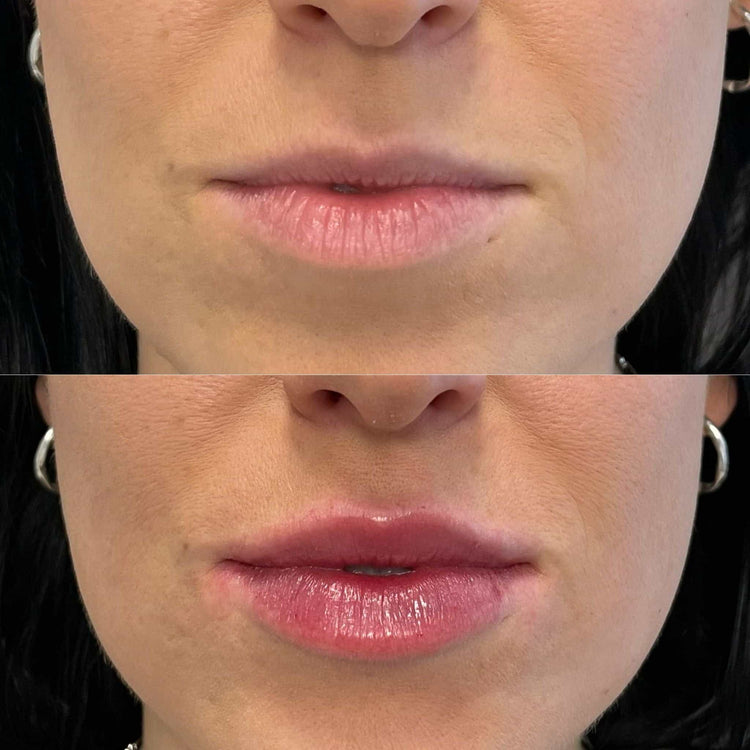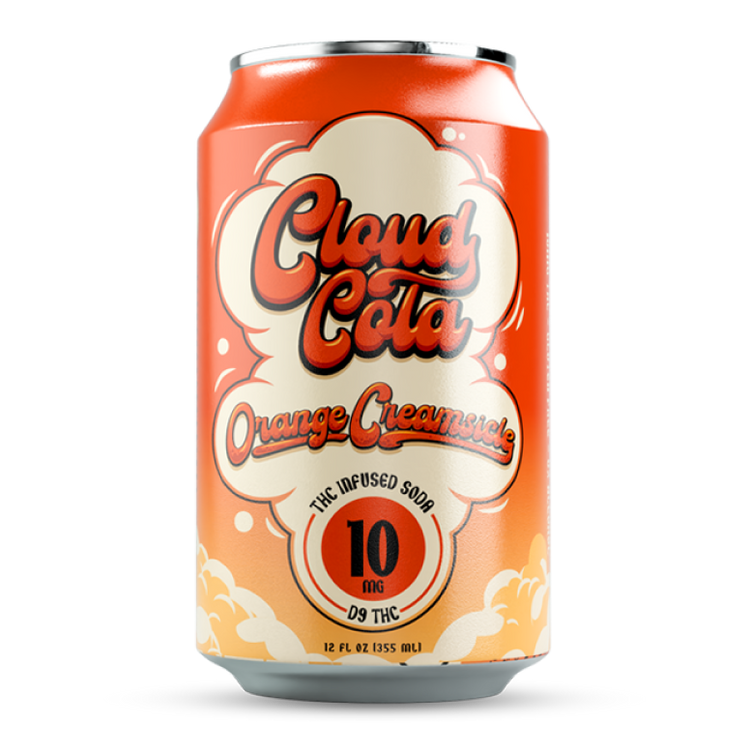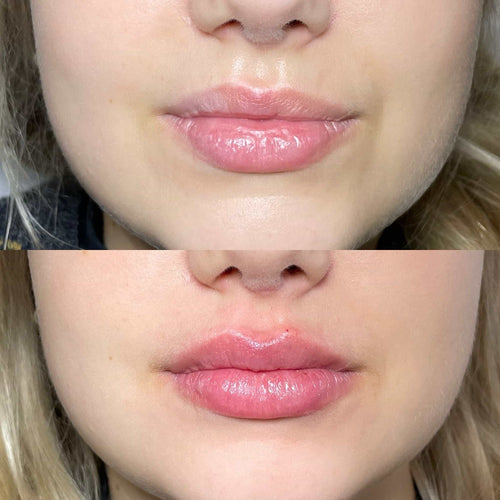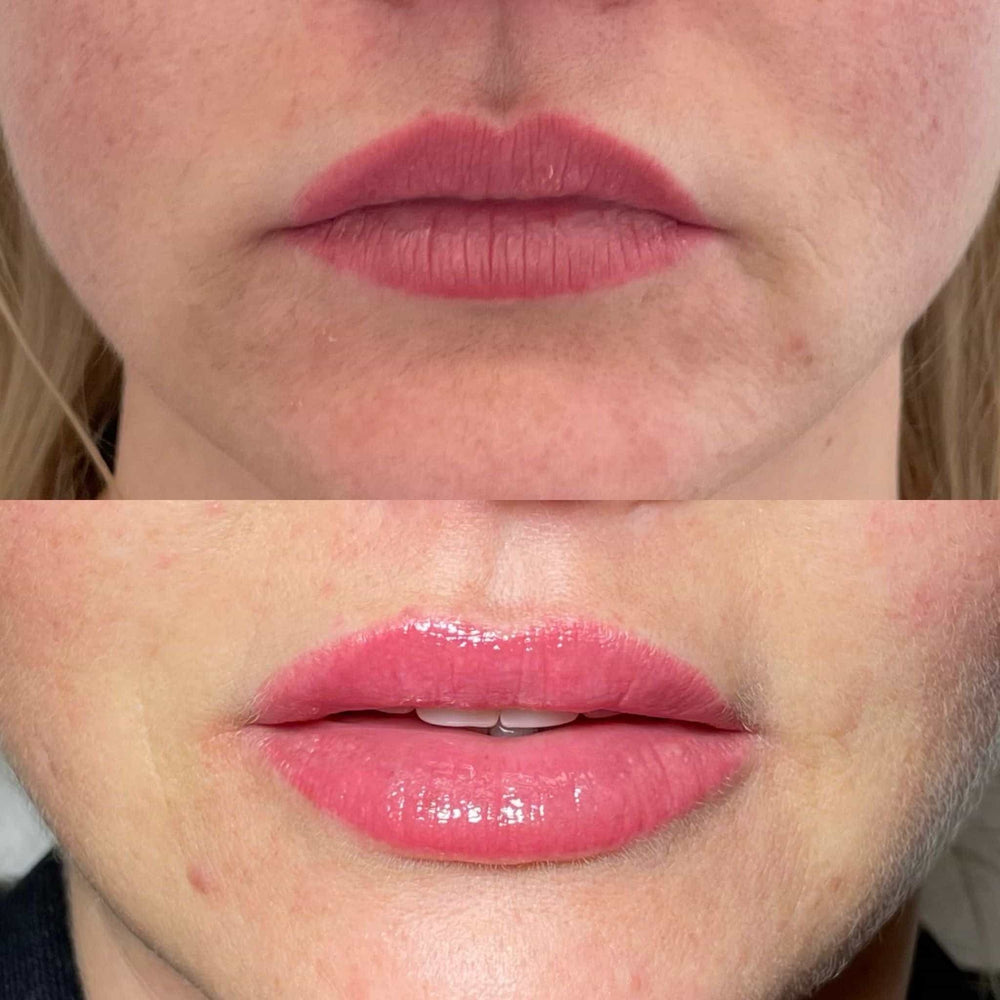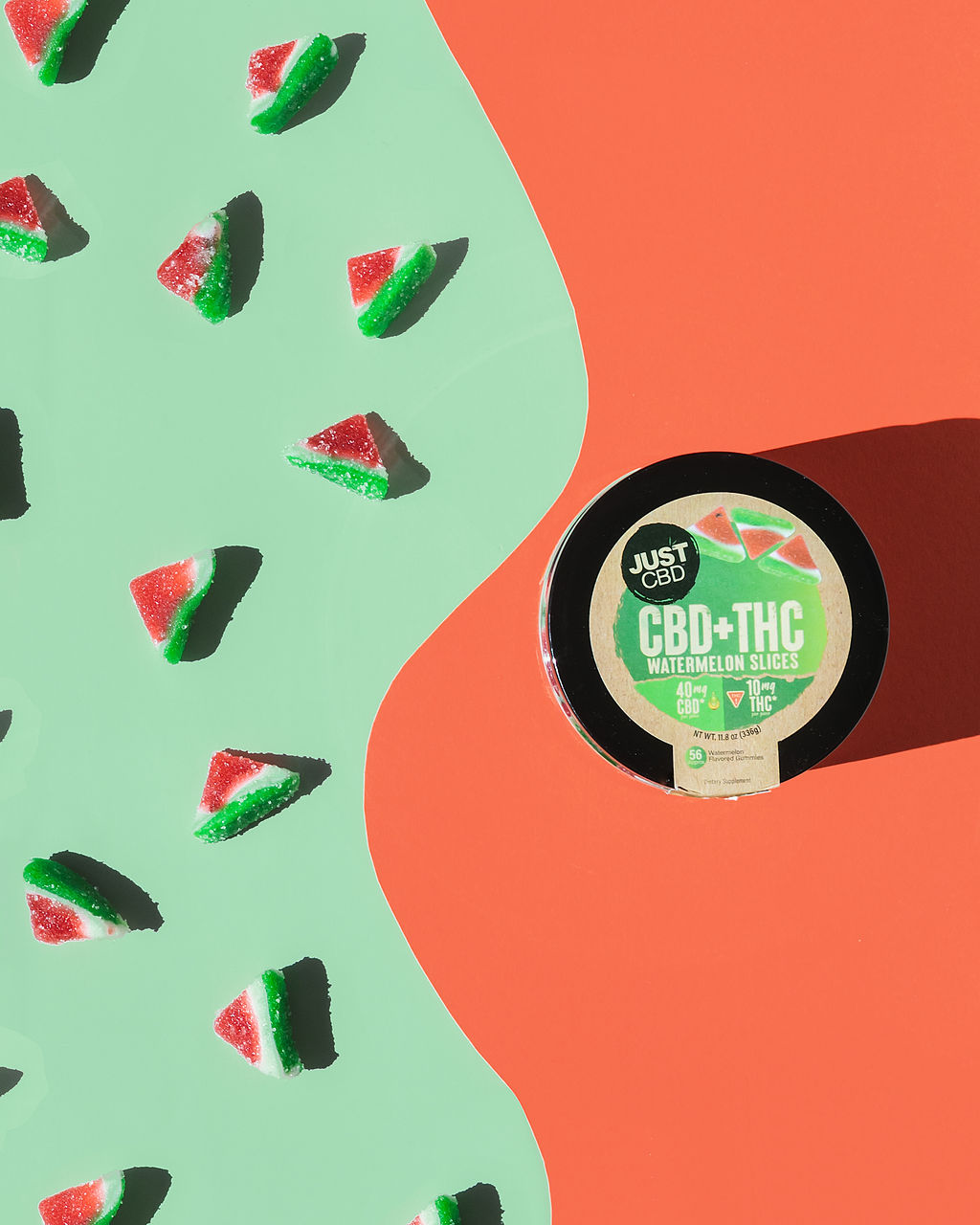Once the numbing cream has taken effect, a gentle cleansing of the skin takes place to remove any dirt, oil, or makeup.
The actual retinol peel process typically lasts between 10-30 minutes, depending on the type of peel and the individual’s skin condition. There are several types of retinol peels available, including:
- Light Peel: A light peel is a superficial treatment that removes only the top layers of dead skin cells, revealing brighter, smoother skin.
- Medium Peel: A medium peel is a more intensive treatment that targets deeper layers of skin, addressing concerns such as fine lines, wrinkles, and age spots.
- Deep Peel: A deep peel is the most intense type of retinol peel, targeting the deepest layer of skin to achieve dramatic results.
During the peel process, a special solution containing retinol is applied to the skin. The solution will start to work immediately, causing the top layers of dead skin cells to peel away, revealing smoother, brighter skin underneath.
- The retinol solution may cause some discomfort or stinging during the treatment, but this should subside within a few minutes as your skin adjusts to the new solution.
- A soothing gel or cream is applied to help calm and hydrate the skin after the peel.
- After the peel, your skin may feel sensitive or pink for a short period of time. This is completely normal and should subside within a day or two.
The benefits of retinol peels include:
- Improved skin texture and tone
- Reduced appearance of fine lines and wrinkles
- Minimized appearance of age spots and hyperpigmentation
- Unclogged pores and reduced acne scars
- Brighter, more radiant complexion
A retinol peel can be customized to suit individual skin concerns and needs. Regular treatments are usually spaced out every 4-6 weeks to maintain optimal results.
The process of a retinol peel involves a series of steps designed to improve the appearance of the skin by promoting cell turnover and collagen production.
A consultation with a qualified professional is typically the first step in the process, during which they will assess the individual’s skin concerns and determine the best course of treatment.
The retinol peel itself is usually administered in a series of sessions, spaced 4-6 weeks apart, as this allows the skin to gradually adapt to the active ingredients without causing excessive irritation or dryness.
During each session, the professional will typically apply a specially formulated solution containing retinol, which can be either a liquid, gel, or cream.
The retinol solution is left on the skin for 5-15 minutes, depending on its strength and the individual’s tolerance level, before being rinsed off with lukewarm water.
Following the application of the retinol solution, the skin may feel slightly warm or tingly due to the increased blood flow, but this is usually temporary and should subside within a short period.
After the peel is removed, the skin may appear red or pink, similar to mild sunburn, which is a sign that the treatment is working effectively.
Over the next 24-48 hours following the session, the skin may experience some peeling or flaking as the retinol solution works to exfoliate and rejuvenate the skin.
A gentle skincare routine and moisturizing can help soothe any irritation or discomfort during this time.
It’s common for clients to notice an improvement in their skin texture, tone, and overall appearance after just one or two sessions of retinol peel treatment, including reduced fine lines, wrinkles, and acne scars.
The benefits of a retinol peel can be long-lasting, with some clients experiencing ongoing improvements in their skin health for several months after the initial treatment series has been completed.
A typical course of 3-6 sessions is usually recommended for optimal results, although some clients may require more or fewer treatments depending on their individual skin concerns and needs.
During the retinol peel process, it’s essential to choose a qualified and experienced professional who can tailor the treatment to your specific skin type and concerns, ensuring the best possible outcomes and minimizing any potential side effects.
Additionally, maintaining good skincare habits, such as sunscreen use, gentle cleansing, and moisturizing, is crucial for maximizing the benefits of a retinol peel and achieving optimal results.
A retinol peel near Fetcham, Surrey can provide individuals with a range of benefits, including improved skin texture, reduced fine lines and wrinkles, enhanced collagen production, and a more even skin tone.
Retinol Peel Near Fetcham, Surrey: What to Expect After Treatment
After undergoing a retinol peel treatment at a clinic near Fetcham, Surrey, patients can expect to experience various effects that vary from person to person. Generally, the skin starts to show improvements within a few days of treatment, with more noticeable results appearing over the next week or two.
The process typically begins with mild redness and sensitivity, which usually subsides within 24-48 hours as the skin starts to peel and flake off the top layers. This peeling process can last anywhere from 3-10 days, depending on individual factors such as skin type, age, and the strength of the treatment.
During this time, patients may experience some discomfort, dryness, or irritation, particularly if they have sensitive skin. However, these side effects are usually mild and temporary, resolving on their own with gentle skincare routines and sun protection.
It’s essential to follow a strict post-treatment care regimen to promote optimal healing and minimize the risk of complications. This typically involves avoiding direct exposure to the sun, using gentle cleansers and moisturizers, and applying topical treatments as recommended by the clinic or dermatologist.
A well-designed retinol peel treatment protocol in Fetcham, Surrey, should include pre- and post-treatment skincare instructions to help minimize potential side effects and ensure the best possible outcome. Patients may also be advised on sun protection measures, such as using broad-spectrum sunscreen with at least SPF 30.
The benefits of retinol peels for skin health are numerous. By increasing cell turnover and collagen production, these treatments can help to reduce the appearance of fine lines, wrinkles, and age spots. Retinol also has anti-inflammatory properties, which can help to combat acne, rosacea, and other skin conditions.
Additionally, retinol peels can improve skin texture and tone, leaving it looking smoother, brighter, and more radiant. This is particularly noticeable in areas with hyperpigmentation or scarring, where the treatment can help to even out skin color and promote collagen remodeling.
The long-term benefits of retinol peels are substantial. By promoting healthy skin cell turnover and collagen production, these treatments can help to prevent premature aging and reduce the risk of skin cancer. Regular maintenance treatments can also maintain optimal skin health and prevent the return of pre-existing concerns.
In the context of Fetcham, Surrey, patients seeking retinol peel treatments should look for clinics with experienced practitioners who have a good understanding of the benefits and potential side effects of these therapies. By following proper post-treatment care instructions and maintaining realistic expectations, individuals can achieve significant improvements in skin health and enjoy the many benefits that retinol peels have to offer.
The effects of a **Retinol Peel** can vary from person to person, but with proper aftercare, you can minimize potential side effects and maximize the benefits of this treatment.
After a **Retinol Peel**, it’s essential to follow a gentle skincare routine to ensure optimal healing and results. Here are some things you can expect during the recovery period:
-
You may experience some redness, swelling, or inflammation in the treated area. This is usually temporary and should subside within a few hours.
-
Skin sensitivity and irritation are common side effects of Retinol Peels. Avoid using harsh products that can strip your skin of its natural oils.
-
Gently clean the treated area with a mild soap and lukewarm water to prevent clogging pores and promoting infection.
-
Apply a moisturizer or serum specifically formulated for sensitive skin to help soothe and hydrate your skin.
-
Avoid direct sun exposure, as **UV rays** can exacerbate redness and irritation. Use a broad-spectrum sunscreen with at least SPF 30 during the day.
The recovery period for a Retinol Peel typically lasts between 1-3 days, but it’s essential to prioritize your skin’s health during this time. Here are some additional tips:
-
Avoid using hot water or exfoliating scrubs, as they can further irritate the skin.
-
Get plenty of rest and try to minimize stress, as it can affect your skin’s ability to heal.
-
Stay hydrated by drinking plenty of water to help flush out toxins and promote healthy skin.
The benefits of a **Retinol Peel** far outweigh the temporary side effects. Here are some long-term advantages of incorporating this treatment into your skincare routine:
-
Improved skin texture and tone: Retinol helps to reduce fine lines, wrinkles, and hyperpigmentation for a more even-toned complexion.
-
Enhanced collagen production: By stimulating collagen synthesis, **Retinol Peels** can help plump up the skin and reduce the appearance of fine lines and wrinkles.
-
Reduced acne and blackheads: Retinol’s ability to unclog pores and reduce inflammation makes it an effective treatment for acne-prone skin.
For optimal results, it’s essential to combine a **Retinol Peel** with a consistent skincare routine that includes the following:
-
Cleansing: Use a gentle cleanser suitable for your skin type.
-
Toning: Balance your skin’s pH with a toner that won’t strip it of its natural oils.
-
Moisturizing: Apply a moisturizer that suits your skin type to keep it hydrated and protected.
By following these guidelines and incorporating a **Retinol Peel** into your skincare routine, you can achieve optimal results and maintain healthy, glowing skin for years to come.
After undergoing a retinol peel treatment in Fetcham, Surrey, patients can expect to experience certain effects that may vary depending on their individual skin types and concerns.
In most cases, the effects of the retinol peel will become apparent within 2-3 days after treatment. This is when the peeling process typically starts, with flakes and scales beginning to flake off from the skin’s surface.
During this time, patients may experience a slight redness or irritation on their skin, which can be managed with gentle skincare routines and sun protection. The peeling process usually peaks around 7-10 days after treatment and then gradually subsides over the next week to two weeks.
After the peeling phase has resolved, patients may notice improvements in the appearance of fine lines, wrinkles, and skin texture. Retinol stimulates collagen production, which can lead to a more radiant and youthful complexion.
Some patients may also experience an improvement in skin tone and hyperpigmentation, particularly if they had concerns related to uneven skin pigmentation prior to treatment. However, results may vary depending on the individual’s skin type and condition.
It’s essential for patients to follow post-treatment skincare instructions carefully to support the healing process and maximize the effectiveness of their retinol peel treatment. This includes using gentle cleansers, moisturizers, and sunscreens to protect the skin from further irritation and damage.
Patients may need to wait several weeks or even months to see optimal results from their retinol peel treatment. With consistent use of retinol products at home, patients can continue to experience ongoing benefits such as improved skin texture, reduced fine lines and wrinkles, and enhanced overall complexion.
In some cases, patients may be advised to avoid certain activities that could exacerbate peeling or irritation, such as taking long baths, using exfoliating scrubs, or engaging in strenuous exercise. By following these guidelines and maintaining a gentle skincare routine, patients can minimize potential complications and ensure optimal results from their retinol peel treatment.
It’s also essential to note that some patients may experience mild side effects such as dryness, redness, or sensitivity to the sun. In these cases, patients should seek advice from their practitioner on how to manage these symptoms and minimize potential complications.
In summary, undergoing a retinol peel treatment in Fetcham, Surrey can be an effective way to address concerns related to fine lines, wrinkles, skin texture, and hyperpigmentation. While the effects may vary depending on individual factors, patients should follow post-treatment instructions carefully and be patient as they allow their skin to heal and recover.
A retinol peel is a popular cosmetic treatment used to address various skin concerns such as fine lines, wrinkles, hyperpigmentation, and uneven skin tone. When considering a retinol peel near Fetcham, Surrey, it’s essential to know what to expect after treatment to ensure the best possible outcomes.
After a retinol peel treatment, you may experience some mild side effects that are usually temporary and resolve on their own within a few days. These common reactions include:
Slight redness and irritation: The skin may appear slightly redd or pink due to the activation of collagen production, which is a natural response to the treatment.
Dryness and flakiness
The peel can cause the skin to feel dry and flaky, particularly in areas where the treatment was most concentrated. This is usually temporary and resolves as the skin adjusts to the new texture.
Sensitivity to the sun**: The skin may become more sensitive to sunlight, making it crucial to use a broad-spectrum sunscreen with at least SPF 30 during the day, especially for the first few days after treatment.
Swelling and inflammation
In rare cases, some people may experience mild swelling or inflammation around the treated areas. This is usually temporary and resolves on its own within a few hours to a day.
However, it’s essential to note that everyone’s skin is different, and not everyone will experience these side effects. Some people may also be more prone to irritation due to various factors such as sensitive skin, allergies, or existing skin conditions.
To minimize the risk of irritation and optimize results, follow a gentle skincare routine after a retinol peel treatment:
Keep your skin hydrated: Use a gentle, non-comedogenic moisturizer that suits your skin type to keep the skin hydrated and plump.
Avoid harsh products: Steer clear of exfoliating scrubs, astringents, and other products that can further irritate the skin during the initial days after treatment.
Use sunscreen daily: Apply a broad-spectrum sunscreen with at least SPF 30 to protect your skin from UV rays, which can exacerbate sensitivity and irritation.
Be gentle when washing: Use lukewarm water and a mild cleanser that suits your skin type. Avoid scrubbing or rubbing the skin, as this can further irritate it.
Get enough sleep: Adequate sleep is crucial for skin regeneration and rejuvenation. Aim for 7-8 hours of sleep each night to help your skin recover from the treatment.
By following a gentle skincare routine and being patient, you can minimize irritation and optimize the results of your retinol peel treatment near Fetcham, Surrey.
In order to get the most out of a retinol peel near Fetcham, Surrey, it’s essential to understand what to expect after treatment.
A retinol peel is a non-invasive chemical exfoliation treatment that uses alpha-hydroxy acids (AHAs) or beta-hydroxy acids (BHAs) to penetrate the skin and stimulate collagen production, reducing fine lines and wrinkles, and improving skin texture.
During the treatment process, your skin may experience some temporary redness, swelling, and sensitivity, but these side effects are usually mild and short-lived.
After a retinol peel near Fetcham, Surrey, you can expect your skin to look brighter and smoother for several days or even weeks.
It’s essential to follow a post-treatment skincare routine to maintain the benefits of the treatment. This should include using gentle, non-comedogenic products that won’t clog pores, as well as applying a broad-spectrum sunscreen with an SPF of at least 30 every day.
Using sunscreen daily can help prevent further skin damage and maintain the benefits of treatment. Look for a physical sunscreen (zinc oxide or titanium dioxide) rather than a chemical sunscreen, as these tend to be more effective at blocking UVA rays.
Additionally, be sure to wear protective clothing and seek shade, especially during peak sun hours, to minimize your skin’s exposure to UV radiation.
Avoid using harsh exfoliants or astringents in the first few days after treatment, as this can irritate the skin and reduce its ability to recover from the peel.
Also, try to maintain a consistent skincare routine that includes gentle cleansing, moisturizing, and eye care. This will help your skin to adapt to the new levels of exfoliation and stimulate collagen production.
Avoid going out in the sun immediately after treatment, as this can lead to premature aging and skin damage.
It’s also essential to keep in mind that retinol peels are not a one-time treatment. Multiple sessions may be necessary to achieve optimal results, so be sure to schedule follow-up appointments with your therapist.
In the weeks following treatment, your skin should start to show significant improvements, including reduced fine lines and wrinkles, improved skin texture, and a more even tone.
With proper care and attention, the effects of retinol peels near Fetcham, Surrey can be long-lasting, often lasting for several months or even years.
It’s also worth noting that retinol peels are suitable for most skin types, including sensitive skin, but it’s always best to consult with a dermatologist or skincare professional before undergoing any new treatment to ensure you’re not allergic to the ingredients used.
Scheduling follow-up appointments is a crucial step after undergoing a retinol peel treatment near Fetcham, Surrey.
The goal of these appointments is to monitor the skin’s response to the treatment and provide guidance on maintaining healthy and glowing skin.
During follow-up appointments, a dermatologist or skincare professional will assess the skin for any signs of improvement or potential issues, such as redness, irritation, or dryness.
The treatments are tailored to address specific skin concerns, including fine lines, wrinkles, hyperpigmentation, and acne.
A retinol peel is a non-invasive, chemical-based exfoliant that stimulates collagen production, promoting cell turnover and revealing smoother, brighter skin.
With regular follow-up appointments, you can ensure the optimal results of your treatment and address any questions or concerns about post-peel care.
The dermatologist may provide personalized advice on products to use during the recovery period, such as moisturizers and sunscreens to help protect and soothe the skin.
Additionally, they will discuss lifestyle modifications that can enhance the effectiveness of your retinol peel treatment, including dietary changes, stress management techniques, and adequate sleep habits.
Scheduling regular follow-up appointments demonstrates commitment to one’s skin health and helps to establish a long-term skincare routine.
This proactive approach ensures that any issues or concerns are addressed promptly, reducing the risk of complications or long-term damage.
By prioritizing ongoing care and maintenance after a retinol peel treatment, individuals can enjoy sustained benefits and maintain healthy, radiant skin for months to come.
The benefits of scheduling follow-up appointments extend beyond immediate results; they contribute to overall skincare wellness and resilience.
The treatment of a retinol peel near Fetcham, Surrey, is a non-invasive and relatively quick procedure that aims to stimulate collagen production, reduce fine lines and wrinkles, and improve skin texture.
After the treatment, you can expect your skin to feel slightly sensitive and red, which is usually temporary and should subside within a few hours. You may also experience some minor stinging or pinching sensations as your skin adjusts to the new collagen production.
It’s essential to follow your aesthetician’s or dermatologist’s after-care instructions to ensure the best results from your retinol peel treatment. This typically includes avoiding direct sunlight, using a broad-spectrum sunscreen with at least SPF 30, and applying moisturizer regularly to soothe and hydrate your skin.
Within a few days after the treatment, you may start to notice improvements in your skin texture, such as reduced pores and an overall more radiant complexion. However, it’s crucial to be patient and allow your skin time to adjust and respond fully to the treatment.
As your skin continues to recover and improve, you can expect to see more noticeable results around 7-10 days after the treatment. At this stage, your skin should start to look smoother, brighter, and more even-toned, with reduced fine lines and wrinkles.
Some people may experience mild side effects such as dryness, redness, or sensitivity, but these usually resolve on their own within a few days. It’s also not uncommon for the skin to become slightly peeling or flaky during this time, which can be temporarily unsightly but will subside once your skin has fully recovered.
To minimize any discomfort and promote optimal results from your retinol peel treatment near Fetcham, Surrey, it’s essential to maintain a consistent skincare routine and avoid excessive sun exposure for several days after the treatment. Using a gentle cleanser and moisturizer, as well as a broad-spectrum sunscreen during this time, will help soothe and protect your skin.
Additionally, incorporating anti-aging treatments such as chemical peels, microdermabrasion, or laser therapy into your skincare routine can enhance the results of your retinol peel treatment and provide long-term benefits for your skin health.
Avoiding smoking and excessive sugar consumption during this time will also contribute to faster recovery and better outcomes from your retinol peel near Fetcham, Surrey. Staying hydrated by drinking plenty of water and maintaining a balanced diet rich in fruits, vegetables, and omega-3 fatty acids will further support your skin’s natural renewal process.
The effects of a retinol peel can vary from person to person, but generally, most people experience some degree of improvement in skin texture and appearance after treatment.
During the recovery period, which typically lasts 1-3 days, the skin may appear red, pink, or even blistered in some cases. This is due to the peeling effect caused by the retinol, as the top layers of the skin are gently exfoliated.
It’s essential to keep the skin moisturized during this time to help soothe any irritation and promote healing. A gentle, non-comedogenic moisturizer can be applied several times a day to keep the skin hydrated.
Some people may experience more intense reactions than others, such as increased sensitivity, itching, or even scabbing. In rare cases, if you have particularly sensitive skin or are prone to breaking out, you might experience more severe side effects.
However, with proper after-care and maintenance, the benefits of retinol peel treatment far outweigh any temporary discomfort. The long-term benefits include improved fine lines and wrinkles, reduced pore size, enhanced collagen production, and a more even skin tone.
The results from retinol peel treatments can last for several months, but the effects will vary depending on your individual skin type, concerns, and treatment frequency.
For optimal long-term benefits, it’s crucial to maintain a consistent skincare routine that includes sun protection, moisturizing, and gentle exfoliation. Additionally, regular retinol peel treatments can help to enhance collagen production, which can lead to more significant improvements in skin texture and appearance over time.
Retinol peels have also been shown to be effective in addressing various skin concerns such as acne, hyperpigmentation, and fine lines and wrinkles. By improving skin texture and tone, retinol peel treatments can help to create a more radiant and youthful complexion.
In the long term, regular retinol peel treatments can lead to a significant reduction in the appearance of fine lines, wrinkles, and age spots. This is due to the increased collagen production caused by the treatment, which helps to plump up the skin and reduce its visible signs of aging.
Moreover, retinol peels can help to prevent premature aging by protecting the skin from environmental stressors such as pollution, UV radiation, and smoke. By strengthening the skin’s barrier function and promoting collagen production, retinol peel treatments can help to maintain a healthy and youthful appearance for years to come.
It’s also worth noting that retinol peels can be tailored to suit individual skin types and concerns. For example, if you’re prone to acne or hyperpigmentation, your therapist may recommend a customized treatment plan that addresses these specific issues.
Overall, the benefits of retinol peel treatments extend far beyond the initial results of the procedure itself. By promoting collagen production, improving skin texture, and reducing the appearance of fine lines and wrinkles, retinol peels can lead to long-term improvements in skin health and appearance.
After undergoing a **Retinol Peel** treatment near Fetcham, Surrey, you can expect certain effects to take place in the days following the procedure.
Initial Effects (0-24 hours after treatment):
One of the primary effects you may experience after a **Retinol Peel** is redness and mild irritation of the skin. This is usually temporary and should subside within 24 hours as your skin heals.
You may also notice some *sensitivity* to sunlight, making it essential to use a broad-spectrum sunscreen with at least SPF 30 during this time.
Peeling (2-5 days after treatment):
A **Retinol Peel** stimulates the skin to peel, which can lead to flaky, dry skin. This peeling process typically starts within 2-3 days and can continue for up to 5 days.
During this time, it’s crucial to keep your skin moisturized with a gentle, fragrance-free product to help soothe and hydrate the area.
Fading and Rejuvenation (4-7 days after treatment):
As the peeling process subsides, you may start to notice an improvement in the overall appearance of your skin. The **Retinol Peel** will have begun to rejuvenate your skin, reducing the appearance of fine lines, wrinkles, and hyperpigmentation.
You can expect your skin to look smoother, brighter, and more even-toned, with a reduced appearance of pores.
Long-term Effects:
The effects of a **Retinol Peel** can last for several weeks or even months after treatment. Your skin may continue to appear brighter, smoother, and more resilient, and you may notice an improvement in the overall texture and tone of your skin.
You may also experience long-term benefits such as:
Reduced fine lines and wrinkles
Improved skin texture and tone
Minimized pores
Enhanced skin radiance
Long-term Skin Health Benefits:
A **Retinol Peel** not only provides immediate results but also offers long-term benefits for your skin. By promoting cell turnover, reducing inflammation, and improving skin elasticity, a Retinol Peel can lead to more sustainable and lasting improvements in the health and appearance of your skin.
After undergoing a **Retinol Peel** treatment near Fetcham, Surrey, it’s essential to know what to expect in terms of your skin’s response and any potential benefits.
The treatment itself typically involves applying a solution containing *retinol*, a derivative of vitamin A, to the skin. This can be done in various concentrations and for different durations, depending on individual skin types and concerns.
A **Retinol Peel** works by penetrating deeper into the skin than other skincare products, stimulating collagen production and cell turnover. As a result, it can lead to improved skin texture, reduced fine lines and wrinkles, and enhanced skin elasticity and firmness.
Immediately after treatment, you may experience some *redness* or *sensitivity*, especially if you have fair skin. This is usually mild and temporary, but it’s essential to follow your therapist’s instructions for post-treatment care to minimize any discomfort.
Here are some things you can expect in the days following a **Retinol Peel** treatment:
- Peeling**: You may start to notice peeling or flaking of the skin, which is a natural response to the treatment. This process usually begins 2-3 days after treatment and can last for up to a week.
- Sensitivity**: Your skin may feel sensitive, especially if you have sensitive skin. Avoid using harsh products or exfoliating your skin during this time.
- Irritation**: You may experience some irritation, such as itching, stinging, or burning. Apply a gentle moisturizer or after-sun lotion to help soothe the skin.
- Improved skin texture**: As the peeling process begins, you’ll start to notice an improvement in your skin’s texture and tone. The skin may look brighter, smoother, and more even-toned.
In terms of long-term benefits, a **Retinol Peel** can lead to enhanced *skin elasticity* and firmness. As collagen production increases, the skin becomes firmer and more toned, reducing the appearance of fine lines and wrinkles.
It’s also worth noting that retinol can have anti-aging properties, helping to prevent further skin damage and promote overall skin health. Regular use of products containing *retinol* or *retinoic acid* can help maintain these benefits and keep your skin looking healthy and youthful.
In addition to its individual benefits, a **Retinol Peel** can also be combined with other treatments, such as chemical peels or laser therapy, to enhance their effectiveness and promote more significant results.
Retinol peel treatments are a popular non-surgical cosmetic procedure that can help achieve a more radiant and youthful complexion near Fetcham, Surrey. The treatment involves applying a solution containing retinol to the skin, which stimulates collagen production, reduces fine lines and wrinkles, and improves skin texture.
A typical retinol peel treatment near Fetcham, Surrey can last anywhere from 30 minutes to an hour, depending on the type of treatment and the individual’s skin concerns. The solution is usually applied to the face, neck, or hands, and left on for a specified period before being rinsed off with a neutralizing solution.
After a retinol peel treatment, it’s common to experience some mild side effects, such as redness, sensitivity, and peeling of the skin. These effects are usually temporary and resolve on their own within a few days. To minimize discomfort and promote healing, it’s recommended to follow a specific after-care routine.
Immediate post-treatment care involves applying a gentle moisturizer or cream to soothe the skin and reduce irritation. It’s also essential to avoid exposure to direct sunlight, as this can cause further irritation and delay the healing process. A broad-spectrum sunscreen with at least SPF 30 should be used instead to protect the skin from UV rays.
Over-the-next few days, the skin may peel, flake, or become slightly sensitive. This is a normal part of the healing process, and it’s essential to resist the temptation to scratch or pick at the skin. Instead, gently washing the face with a mild cleanser and moisturizing regularly can help promote recovery.
As the skin regenerates, it will start to reveal a brighter, smoother complexion. This is because the retinol solution has stimulated collagen production, reduced fine lines and wrinkles, and improved skin texture. It may take several sessions of treatments to achieve optimal results, but with consistent treatment and proper after-care, the benefits can be long-lasting.
Retinol peel treatments near Fetcham, Surrey can also help address specific skin concerns such as acne scars, hyperpigmentation, and fine lines and wrinkles. The solution can penetrate deeper into the skin, addressing underlying issues that may have been hiding beneath the surface.
For optimal results from a retinol peel treatment near Fetcham, Surrey, it’s essential to follow a consistent skincare routine in the lead-up to treatment. This includes using gentle products, avoiding harsh exfoliants, and protecting the skin from the sun.
It’s also important to maintain realistic expectations after a retinol peel treatment. While the treatment can produce noticeable results, it may take time for the full benefits to be visible. Be patient and consistent with your skincare routine, and you’ll start to see improvements in your complexion over time.
A course of 3-6 retinol peel treatments near Fetcham, Surrey can help achieve a more radiant and youthful complexion. These sessions should be spaced several weeks apart to allow the skin to fully recover between treatments.
Results from retinol peel treatments near Fetcham, Surrey can last for several months, depending on individual skin types and concerns. To maintain the benefits of treatment, regular maintenance sessions may be necessary to keep the skin looking its best.
After undergoing a retinol peel treatment in Fetcham, Surrey, you can expect to see noticeable improvements in the appearance of fine lines, wrinkles, and age spots.
The effects of retinol peel are cumulative, meaning that they will become more pronounced over time as your skin continues to heal and respond to the treatment. Here’s a breakdown of what to expect after a retinol peel near Fetcham, Surrey:
- Short-term effects (1-3 days): Mild redness, sensitivity, and dryness are common side effects of retinol peel. These symptoms usually subside within a few days as your skin adjusts to the new treatment.
- Medium-term effects (7-14 days): As the peeling process progresses, you may start to notice flaking or shedding of dead skin cells, which can feel itchy or uncomfortable. This is a natural part of the healing process, and it will eventually subside.
- Long-term effects (2-6 weeks and beyond): The true benefits of retinol peel become apparent after the initial healing phase has passed. Expect to notice:
- A reduced appearance of fine lines and wrinkles as collagen production increases, plumping up the skin and reducing the appearance of deep wrinkles.
- A decrease in age spots and hyperpigmentation, resulting in a more even-toned complexion.
- An improvement in skin texture, tone, and firmness, leaving you with a smoother, brighter, and more radiant complexion.
It’s essential to note that retinol peel is not a one-time treatment. To maintain the results and continue enjoying the benefits of improved skin texture, wrinkles, and age spots, you’ll need to commit to ongoing treatments or use retinol products at home.
Additionally, it’s recommended to follow a comprehensive skincare routine, including gentle exfoliation, sunscreen use, and moisturizing, to help your skin adjust to the new treatment and maintain its optimal health.
Overall, a retinol peel near Fetcham, Surrey can be an effective way to address fine lines, wrinkles, and age spots, leading to a smoother, brighter, and more youthful complexion. By understanding what to expect after treatment, you can better prepare yourself for the process and enjoy the long-term benefits of improved skin health.
The treatment of a retinol peel near Fetcham, Surrey can lead to some changes in the skin that may seem daunting at first, but are ultimately positive signs of the treatment’s effectiveness.
Immediately after the treatment, your skin may feel sensitive and look slightly red, similar to a mild sunburn. This is usually temporary and should subside within a day or two.
The peeling process can start as early as 3-4 days after the treatment, with flakes of dead skin starting to flake off. This is a natural part of the healing process, and it’s essential to keep the skin moisturized during this time.
As the peel progresses, your skin will begin to reveal brighter, smoother, and more even-toned skin. It may take up to 7-10 days for the full effects of the treatment to become visible.
During this time, it’s crucial to avoid any harsh products that can strip the skin of its natural oils, such as exfoliating scrubs, astringent toners, and rough cloths. Instead, stick to gentle, non-comedogenic cleansers and moisturizers that are formulated for sensitive skin.
It’s also essential to protect your skin from the sun during this time, as it can make the peeling process worse and lead to premature aging. Use a broad-spectrum sunscreen with at least SPF 30 daily, even on cloudy days.
In the weeks following the treatment, you can start to notice a significant improvement in the appearance of your skin. Fine lines and wrinkles may appear smoother, and skin discoloration may become less noticeable.
Some people may experience mild side effects such as dryness, redness, or itching, but these are usually temporary and subside within a few days.
It’s also worth noting that retinol peels can be more sensitive in certain areas of the skin, such as the face, neck, and décolletage. Be gentle when washing these areas, and avoid using exfoliating products or harsh chemicals on them.
To maintain the best possible results from your retinol peel treatment near Fetcham, Surrey, be sure to follow a consistent skincare routine that includes protecting your skin from the sun, staying hydrated, and getting enough sleep.
It’s also recommended to use sunscreen with at least SPF 30 daily, even on cloudy days, and avoid using products that contain alpha-hydroxy acids (AHAs) or beta-hydroxy acids (BHAs), as these can make your skin more sensitive during the peeling process.
For optimal results from your retinol peel treatment near Fetcham, Surrey, it’s recommended to combine it with other skincare treatments such as chemical peels, microdermabrasion, or laser skin resurfacing. These treatments work in harmony with the retinol peel to achieve more profound and long-lasting results.
Consulting a professional esthetician or dermatologist who has experience with retinol peels near Fetcham, Surrey can help you tailor a personalized skincare plan that addresses your unique skin concerns and ensures optimal results from your treatment.
By following these tips and taking good care of your skin during the recovery process, you can enjoy smoother, brighter, and more even-toned skin for years to come.
The CBD Consultancy BeyBey Name Bye Bye Belly Blog The Lady London

